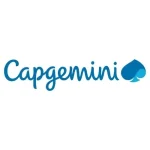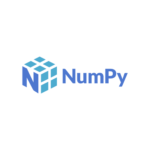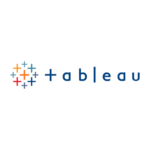Data Analyst Course in Hyderabad
100% Assured Placements
3 Months Internship Letter
Practical Training by - Top Mentors
Unlock your potential with a Data Analytics Course in Hyderabad with internships & 100% placement guarantee. Get equipped with data-driven technical skills by working on challenging projects and build an impressive portfolio to take your career to the next level!

Overview of Data Analytics Course in Hyderabad
10+
industry tools
11+
live projects
360+
hours training
- India’s first Data Analyst Course in Hyderabad
- Get a 3-month internship letter
- Acquire ISO certifications for Data Analytics, Data Science, Machine Learning & AI
- Get access to unique modules taught nowhere else in the country
- Work on relevant case studies, live projects, and challenging assignments
- Get practical Data Analytics Classes in Hyderabad from top industry experts
Why Digifine for Data Analytics Classes in Hyderabad?

12 LPA
Highest Package

4.9 LPA
Average Package

96%
Placement Rate

10,000+
Students Trained
Our Alumni Work With Brands Like:











Request A Callback From Our Admissions Team Contact Us
• Introduction: What is Excel, Why Excel & Get Started
• Basic: Range, Move, Add, Delete Cells & Undo
• Basic Formulas: Sum, Average, Count, Count If, Sum If & Average If
• Advance Formulas: Vlookup, Sum Ifs, Count Ifs, If, Concatenate & Index Match
• Operators: Arithmetic, Comparison, Logical & Reference
• Formatting: Excel Formatting, Sort & Filter
• Tables: Pivot Table, import & export
• Conditional: If, AND, OR, NOT
• Rules: Highlight Cell Rules
• Bars & Charts: Data Bars, Colour Scales, Icon Sets, Pie Charts & Histograms
• Charts Customization
• Introduction to Python
• Installation & Downloads
• Basic : Syntax, Comments, Indentation, Editors
• Variables : Variables, Types of Variables, Various Variable, Scope
• Operators: Arithmetic, Assignment, Logical & Comparison
• Casting : to String, to Integer and to Float
• Conditions: IF, Elif, Else IF and Nested IF
• Loops: While Loop & For Loop
• Functions: Intro, What is, Types of, user inputs
• Modules: types of,
• Pre-Defined: Dates, Math
• PIP: Package Manager, Installation, Use
• Python Oops: Classes/Objects, Inheritance, Iterators, Polymorphism
• Introduction to MYSQL (Database)
• Creation : Database, Tables and Primary Key
• CRUD: Creating, Reading, Updating, and Deleting Documents
• Condition : Where, Order By and Limit
• Remove: Delete and Drop Table
• Join : Inner, Right and Left
• Alternatives: Sum, Sumup and more
• Aggregate Functions: min, max, count, average, sum, etc
• Introduction of Numpy
• Installation & Import of Numpy
• Arrays: Creating Arrays, Access Array Elements, Array Slicing
• Dimensions in Arrays: 0D, 1D, 2D, 3D
• Data Type: String, Integer, Float, Boolean & Complex
• Shape: Array Shape & Array Reshape
• Array Display: Array Copy & Array View
• Iterating: Array Iterating, Joining & Splitting Array
• Filter: Array Sorting, Searching & Filtering Arra
• Introduction to Pandas
• Installation & Import Pandas
• Pandas Series: Labels & Creating Labels
• Data Frames: Intro & Locate Row
• JSON: Intro & Dictionary as JSON
• Analyse: Analysing Data Frame
• Data: Cleaning Data, Cleaning Empty Cells, Cleaning Data of Wrong Format
• Introduction to Matplotlib
• Installation & Importing Matplotlib
• Pyplot & Plotting: Plotting x and y axis, Plotting without line, Multiple Points
• Markers: Reference, Line Reference
• Line: Line style, Line Colour, Line width, Multiple Line
• Labels: Title, Set Font, Position the Title
• Grid: Add Grid Line, Specify Grid Line, Set Line Properties
• Subplot
• Display: Scatter, Bars, Histograms & Pie Charts
• Introduction to SeaBorn
• Installation & Import SeaBorn
• Environment Setup
• Import: Datasets & Libraries
• Palette: Colour Palette
• Display: Histogram, Visualizing Pairwise Relationship
• Distribution: Plotting Categorical, Observation, Violin Plots
• Facet Grid, Data Subsets & Pair Grid
• Introduction of Statistics
• Data: Gathering, Describing Data, Parameters & Statistics
• Mean & Mode: Arithmetic Mean, Arithmetic Median, Arithmetic Mode & Arithmetic Range
• Display: Bar Graph, Histograms, Pie Charts
• Data Types: Measurement Levels, Variation Rang
• Introduction, Download & Installation
• Charts: Column Charts, Stacked Column Chart, Pie Chart, Donut Chart, Funnel Chart, Ribbon Chart
• Content: Include & Exclude
• Data: View Data & Export
• Map: with Power BI, with Pie Chart & with Formatting in Map
• Table: Creating Table, Applying Conditional, Aggregation in Table
• Matrix: Matrix’s & Hierarchies in Matrix
• Introduction & Installation
• Connections & Data Types
• UI, Dimensions and Measures
• Visualizations: Intro & Applying Visualization
• Functions: Intro & Sort Functions
• Casting: Fore Casting
• Perception: Visual Perception, Server, Online
• Data Source: Connecting Data Source, Different Charts in Tableau
| DIGIFINE | OTHER INSTITUTES |
| 100% Placement Guarantee at top companies | No placement guarantee |
| 3-month Internship Letter during the course | No internship letter during the course |
| ISO certifications that are globally recognized for Power BI, Tableau & Data Analytics | No globally recognized certifications |
| Industry Expert, Highly Skilled In-house Trainers | Faculty with not enough relevant experience |
| Overseas Mentors for international industry insights | No overseas mentorship |
| Training on the programming language Python with libraries like NumPy, Pandas, Matplotlib, etc., along with an upgraded syllabus (with tools like MySQL, Tableau, PowerBI, Advanced Excel, Google Sheets, etc.) | No unique, relevant, and upgraded syllabus with multiple tools, programming languages, and databases |
| Practical Training with Live Projects, Case Studies, and Regular Assignments | Not enough assessments or hands-on training |
| Post-Course Support for each student, even after completion of Data Analytics Course in Hyderabad | No post-course support after training |
| 360 hours of Intense Course Training | Not enough hours of training |
Students at Digifine’s Data Analytics Course in Hyderabad are the first ones to get access to all new and upcoming technologies in the data-driven IT landscape. Here, they get to learn from industry experts who bring their expertise into the classroom and make sessions extremely informative as well as interactive. As a Digifine Data Analyst Course in Hyderabad student, you will be receiving global exposure while working on industry-relevant tools and earning certifications for them. Get a 3-months internship letter and 100% placement guarantee by enrolling now!











Are you still wondering what your future would really look like after completing Digifine’s data analytics course in Hyderabad? Hear about the data analyst training and placement from our students and find out for yourself!
I joined Digifine’s Data Analytics course with no prior experience, and it turned out to be the best decision. Trainers explained every concept with real datasets, making analysis easy to grasp. Tools like Excel, SQL, and Power BI were taught in depth. I got placed quickly with full support throughout.
Digifine’s Data Analytics course is well-structured. We worked on dashboards, explored industry use cases, and mastered Excel, SQL, and Power BI. The mentors were patient and professional. Their placement team was proactive, and I got multiple interview calls. I now work with a top analytics firm—dream fulfilled!
The Data Analytics course at Digifine focused equally on tools and logic. SQL queries, data cleaning, and dashboard creation were taught with hands-on exercises. They even conducted resume-building and mock interviews. Thanks to the amazing support and training here, I landed a data analyst role after the course.
Digifine offered everything I was looking for in a Data Analytics course: expert mentors, practical sessions, and strong placement support. I had no background in analytics, yet I never felt lost. The journey from beginner to confident analyst felt smooth. I’m now placed and loving the work.
Stand out in the IT industry by enrolling for Digifine’s Data Analyst Course in Hyderabad. Wondering how? Digifine provides students with ISO certifications for every major course module that helps them become a certified professional by the time they have successfully completed their Data Analytics Classes in Hyderabad. Further, the 3-months internship letter they receive here not only helps them flaunt their diverse skillset, but also advance in their careers with incredible ease!






Programming Languages:




Python Database:

Data Visualization Tools


Other Data Analytics Tools


Learn by practically applying your knowledge and honing your skills through these live projects included with your data analytics course in Mumbai!
Digifine Academy has a seven-year old School of Tech that has been providing premium and affordable education to students since the past seven years. They have been successfully running their Data Analytics Classes in Hyderabad, Mumbai, Navi Mumbai as well as online in other parts of the world. Digifine is the perfect choice for anyone looking to upskill or build a career in the IT industry. It offers practical training imparted by industry experts who also focus on providing students with tons of exposure and hands-on experience through projects. Enroll for Digifine’s Data Analyst Course in Hyderabad to get your hands on professional certifications, a 3-months internship letter and 100% placement guarantee.
- A well-designed curriculum shapes your entire learning process and forms the backbone of Digifine’s Data Analytics Course in Hyderabad. Go through a smooth transition from the basics to the more advanced and complex parts of the program with ease. Find unique modules and a comprehensive syllabus breakdown for the Data Analyst Course in Hyderabad below:
- Data Visualization: Tableau, Power BI
- Programming Language: Python (libraries – Pandas, Seaborn, NumPy, Matplotlib)
- Database: MySQL
- Other Tools: Advanced Microsoft Excel, Google Sheets
Good teachers can truly take your learning journey to the next level. Digifine houses a panel of experts with several years of experience working in both education and IT industry. They guide the Data Analytics Classes in Hyderabad by focusing on each student’s unique learning style, needs and requirements. They believe in bringing their insights into the classroom so that you can learn from their experiences as well, and be encouraged in the right direction. They are extremely friendly and supportive throughout the Data Analyst Course in Hyderabad.
Digifine strongly believes in learning by doing. The Data Analytics Course in Hyderabad is therefore guided by only a 20% theoretical and 80% practical approach. This entails emphasis on regular tasks, interactive assignments and immersive projects. Apart from helping students hone their problem-solving skills, this hands-on style of training pushes them to learn from their mistakes and collaborate with their peers. The Data Analyst Course in Hyderabad aims at making students holistically capable of competing in the industry and acing their respective career paths.
Get recognized as an ISO-certified analyst with Digifine’s Data Analytics Course in Hyderabad now! Digifine offers multiple professional certifications to its students on various pertinent course modules. These add tremendous value to your resume and profile and help you stand out as a seasoned professional in the industry.
Digifine is the only institute all over Asia providing a Data Analytics Course in Hyderabad with job guarantee. Here, students get end-to-end placement support through portfolio preparation, resume building, masterclasses on interview etiquette and mock interviews. Not only this, but you also receive a 3-months internship on the successful completion of all your projects by the end of these Data Analytics Classes in Hyderabad. Get placed in top companies with competitive packages in just 6 months!
Digifine prides itself in being one of the only institutes all across Asia to provide post-course support to each of its students. This essentially means that students are free to approach Digifine’s team and trainers for any queries or support even after the completion of their Data Analyst Course in Hyderabad. Students find a warm and friendly atmosphere that always encourages them to put their best foot forward. Even if you have graduated from the Data Analytics Classes in Hyderabad, the doors to Digifine will always be open for you!
Enroll
Kickstart your Data Analytics journey by registering for our career-focused program!
Get Trained
Learn Data Analytics from highly experienced trainers through practical training and industry exposure!
Assessments
Master tools by solving real-world case studies, working on challenging assignments and collaborating on live projects!
Mock Interview
Become job-ready by getting the right knowledge, skills and etiquette from our panel of expert interviewers!
Get Placed
Secure your career with 100% guaranteed placement at top Data Analytics companies in India and abroad!
What is the Digifine Data Analytics Course in Hyderabad?
Digifine’s Data Analyst Course in Hyderabad is a 6-months in-depth technical program that trains students on basic to advanced modules using a primarily practical approach. This is the perfect choice for someone looking to upskill or even build a career in the IT industry. Learn industry-relevant tools and work on challenging projects while earning ISO certifications as well as a 3-months internship letter at these Data Analytics Classes in Hyderabad. Get placed at top companies with 100% job guarantee.
What is the syllabus of Digifine’s Data Analytics Course in Hyderabad?
The Data Analyst Course in Hyderabad has a diverse curriculum that covers subjects and tools like Excel, Google Sheets, Tableau, Power BI, Python programming, MySQL, etc
Are Digifine Data Analytics Classes in Hyderabad online or offline?
Digifine Academy has both online and offline programs. Its offline sessions are conducted via the Data Analytics Classes in Hyderabad, Mumbai (Andheri) and Navi Mumbai (Vashi). Live online sessions are accessed by students all over the world.
What certifications will I get after completing the Digifine’s Data Analytics Course in Hyderabad?
On completing the Data Analyst Course in Hyderabad from Digifine Academy, you will be receiving several ISO certifications for the modules that are covered, as well as a 3-months internship letter.
Is the Data Analytics Course in Hyderabad difficult?
Not at all. The factor that determines the difficulty level of any program is the willingness to learn and the kind of training students receive. Digifine’s Data Analyst Course in Hyderabad is guided by highly experienced trainers who take you step by step through every part of the learning process. You would be able to practise and apply your acquired knowledge and skills through regular tasks, assignments and projects throughout the Data Analytics Classes in Hyderabad.
Who can apply for the Digifine’s Data Analytics Course in Hyderabad?
Anyone with an interest or willingness to master technical data-related skills right from scratch can opt for Digifine Academy’s Data Analyst Course in Hyderabad.
Do I need any prior degree, technical knowledge or marketing background to apply for these Data Analytics Classes in Hyderabad?
No, there is no mandatory prerequisite to applying for Digifine’s Data Analytics Course in Hyderabad. Whether you are a student, working professional, freelancer, entrepreneur or simply someone who wishes to acquire data analytics skills, this program will cater to your specific needs. All you need is a keen desire to learn and Digifine’s Data Analyst Course in Hyderabad will deliver by training you right from the basics and take you through advanced and complex topics.
Is Data Analytics a good career option?
Data Analytics has been an important and promising discipline with respect to any and every industry including Marketing, Sales, Tech, Education, Finance, Healthcare, Retail, Banking, Manufacturing, and many more. Digifine’s Data Analyst Course in Hyderabad is an upskilling as well as career-oriented program that prioritizes practical training so that you can acquire the right skillset to advance in your respective careers. Sign up for Digifine’s Data Analytics Classes in Hyderabad to access 100% placement guarantee and post-course support!
What salary can I get after completing this Data Analytics Course in Hyderabad?
On the completion of Digifine’s Data Analyst Course in Hyderabad, you would be getting a 3-months internship letter that will help you land promising career opportunities. Digifine provides end-to-end placement support to students through portfolio preparation, resume building, mock interviews, etc. You can usually expect packages between 2.5 to 5.5 LPA after their Data Analytics Classes in Hyderabad.
How long does it take to do the Data Analytics Course in Hyderabad?
Digifine’s Data Analyst Course in Hyderabad takes the duration of roughly 6 to 7 months for completion. You also have the option of fast tracking your training by attending daily classes and completing the program within 4 months.
How can I pay the Data Analytics Classes in Hyderabad fees?
Digifine Academy’s Data Analytics Course in Hyderabad is a technical, skill-based and career-oriented program that comes with extremely affordable fees, which can be paid either entirely together, in 2 in-house installments or in the form of no-cost EMIs of up to 6 months.






